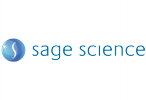Probing the molecular interactions within the foot-and-mouth disease virus (FMDV) RNA replication complex has been restricted in part by the lack of suitable reagents. Random insertional mutagenesis has proven an excellent method to reveal domains of proteins essential for virus replication as well as locations that can tolerate small genetic insertions. Such insertion sites can subsequently be adapted by the incorporation of commonly used epitope tags, facilitating their detection with commercially available reagents. In this study, we used random transposon-mediated mutagenesis to produce a library of 15 nt insertions in the FMDV nonstructural polyprotein. Using a replicon-based assay, we isolated multiple replication-competent as well as replication-defective insertions. We adapted the replication-competent insertion sites for the successful incorporation of epitope tags within FMDV non-structural proteins for use in a variety of downstream assays. Additionally, we showed that replication of some of the replication-defective insertion mutants could be rescued by co-transfection of a ‘helper’ replicon, demonstrating a novel use of random mutagenesis to identify intergenomic transcomplementation. Both the epitope tags and replication-defective insertions identified here will be valuable tools for probing interactions within picornavirus replication complexes.
Read more




































